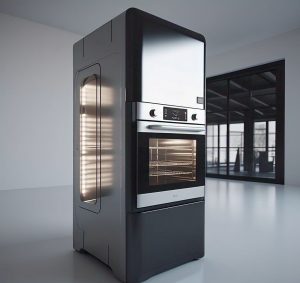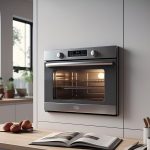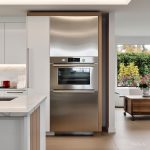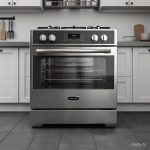Introduction

Besides its use for domestic heating, in winter people may rest on top of the oven to keep warm.
The oven is also used for cooking, such as baking pancakes or pies. https://canonpk.com/collections/tablThe porridge or the
pancakes prepared in such an oven may vary in taste from the same meal prepared on a modern
stove or range. The process of cooking in the Russian oven can be called “languor” — holding
dishes for a long period at a steady temperature. Foods that are believed to have a
typical character from being prepared in a Russian oven include baked milk, pasta candies,
mushrooms cooked in sour cream, and even a simple potato. Bread is put in and taken out from
the oven apply a special wooden paddle on a long shank. Cast iron pots with soup or milk are
removed with a two-pronged metal stick.https://www.westpoint.pk/collections/kitchen-appliances-ovens Microwaves are electromagnetic gestures. Their
regularity (wavelengths) are in the scalehttps://fotilepk.com/product-category/oven/
. Regarding wavelengths as typical structural
dimensions, one notices that microwaves do not
have dimensions of, as might be looked for from
the mock ‘micro’ in their name. Following
the international accord, microwave ovens at
home.
Types of Oven
Electromagnetic waves may be absorbed by
matter in many different ways hang on their
wavelength and the shape of the matter (gas, liquid).Free atoms and molecules usually soak up
ultraviolet (UV) by the fervor of electrons whereas
in the actinic ray, the excitation of molecular vibrations
and/or rotations dominate.https://www.daraz.pk/large-ovens/ Free and unstirring
turn cannot happen in liquid water due to
the interactions with neighboring molecules but
solids and liquids may soak up
microwaves.
In low-frequency electric fields, the antenna
easily follows the changes in the field, and their
attitude changes in phase with the field. https://www.dawlance.com.pk/microwave-ovens?utm_sourceFinally, at a very high number
(1–10 THz) the molecules can no longer reply to
the electric field.
Main Theme Features
It is still much faster to defrost food in
a microwave than to go from it in the air at room
heat.https://www.dawlance.com.pk/microwave-ovens?utm_source The oven is periodically turned on
for short periods and then off for a longer time
gap.https://www.aysonline.pk/kitchen-appliances/ovens/ If by chance, some ice has melted at
some speck, the liquid water will be heated in the
‘on-phase’.
Advantages and Disadvantages
Positive Effects:
- Efficiency and Speed: Modern ovens cook food faster than traditional methods (e.g., open flames), saving time.
- Versatility: Enable diverse cooking techniques (baking, roasting, broiling) for varied meal preparation.
- Consistent Results: Maintain steady temperatures for even cooking, crucial for precision-based dishes like bread or soufflés.
- Safety Features: Automatic shut-off, child locks, and insulated designs reduce risks compared to open flames.
- Nutrient Retention: Methods like roasting preserve more nutrients compared to boiling.
- Energy Efficiency: Convection ovens circulate heat, reducing cooking time and energy use.
- Cultural Impact: Facilitate baking traditions and global cuisines, enriching culinary practices.
Negative Effects:
- High Energy Consumption: Older models consume significant electricity/gas, increasing costs and environmental footprint.
- Fire Hazards: Improper use (e.g., grease buildup, flammable items nearby) can lead to fires.
- Health Risks:
- Indoor Air Quality: Gas ovens may emit carbon monoxide if poorly ventilated.
- Harmful Compounds: High-temperature cooking can produce acrylamide in starchy foods.
- Physical Hazards: Burn risks from hot surfaces or door glass.
- Cost and Space: High purchase/maintenance costs and large spatial requirements challenge small kitchens/budgets.
- Environmental Impact: Reliance on fossil fuels (electric grids or natural gas) contributes to carbon emissions.
- Convenience Trade-offs: Over-reliance on processed frozen meals, potentially affecting health.
- Cleaning Challenges: Spills require effort; self-cleaning modes use excessive energy. Conclusion: Ovens offer significant benefits in cooking efficiency and versatility but require mindful use to mitigate health, safety, and environmental drawbacks. Balancing modern convenience with traditional methods and energy-conscious practices can optimize their utility.



